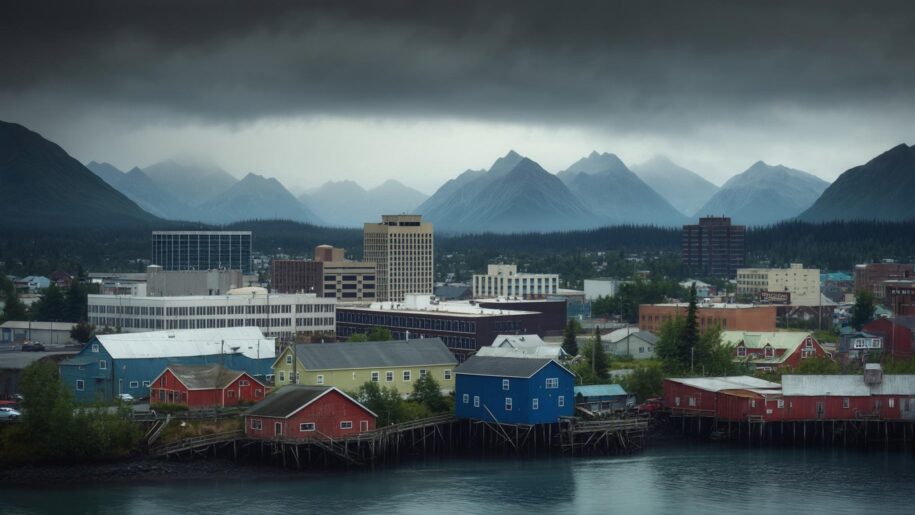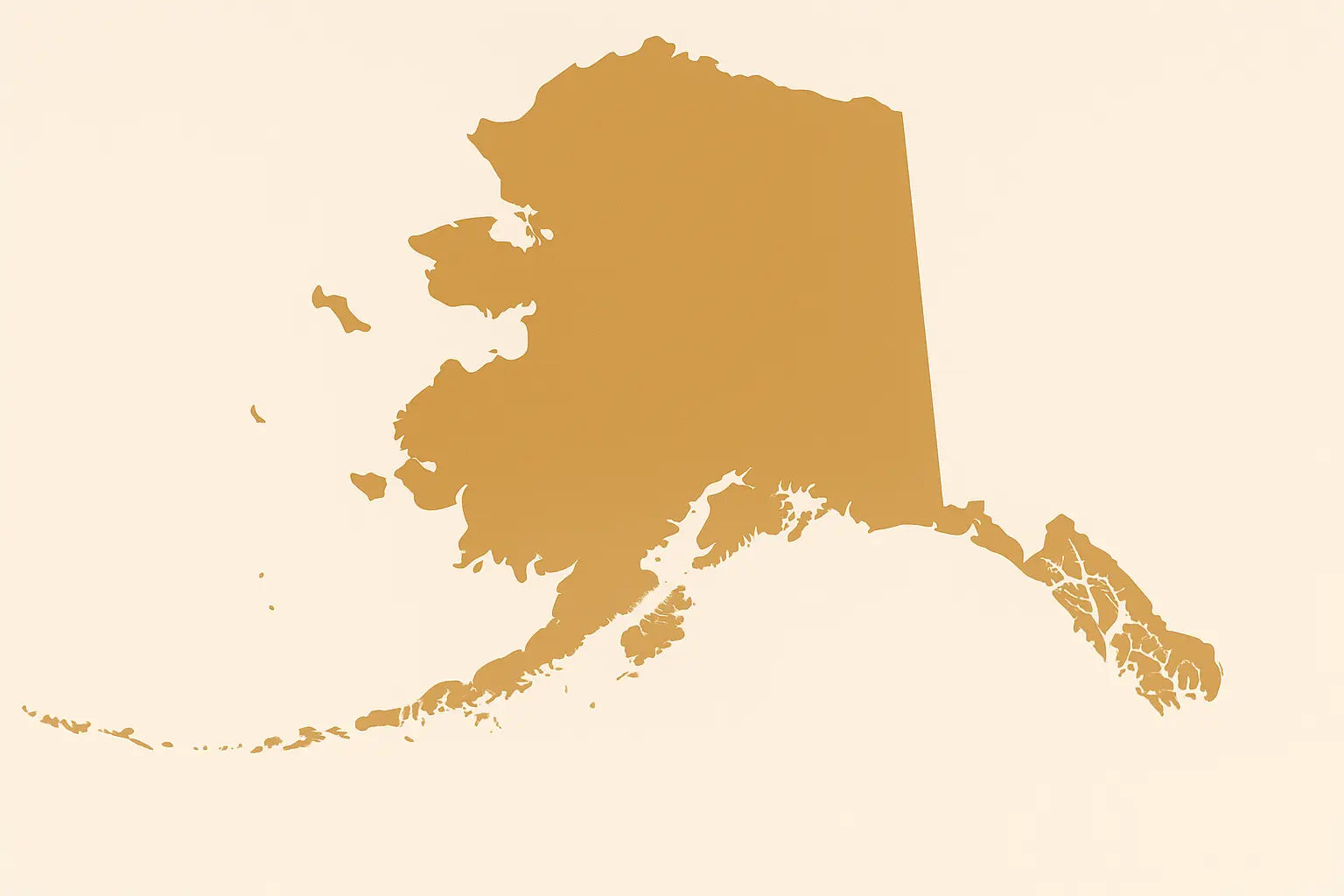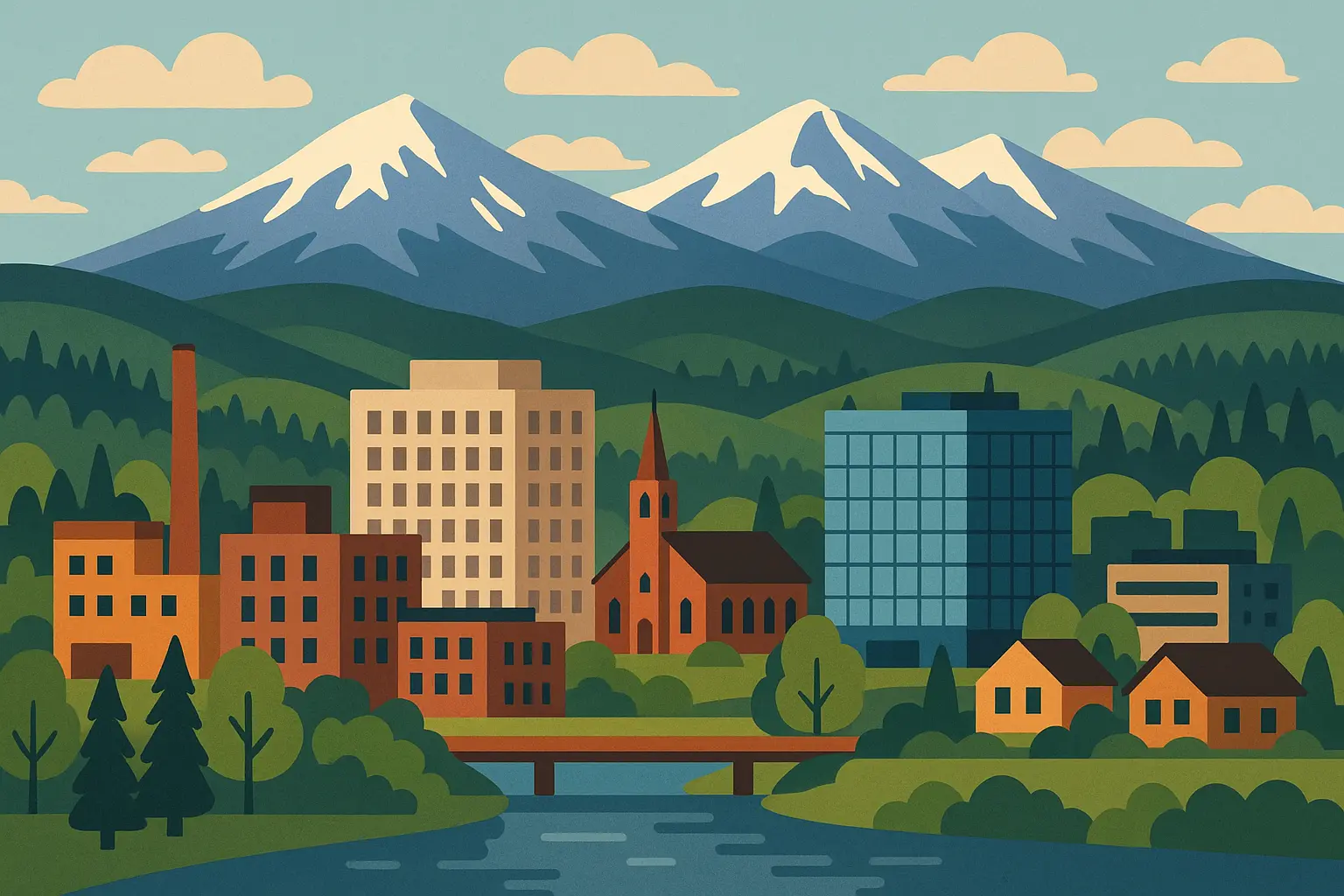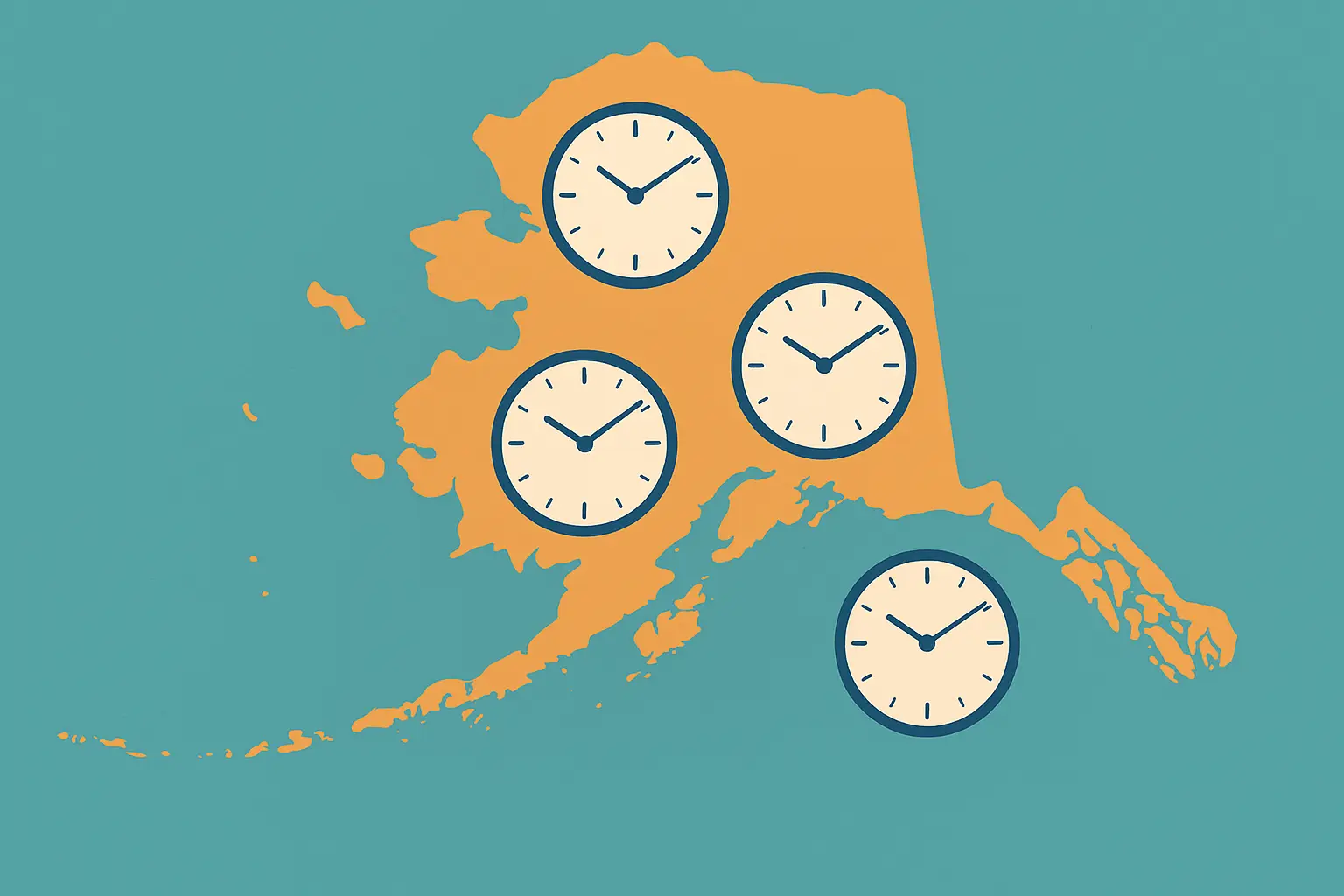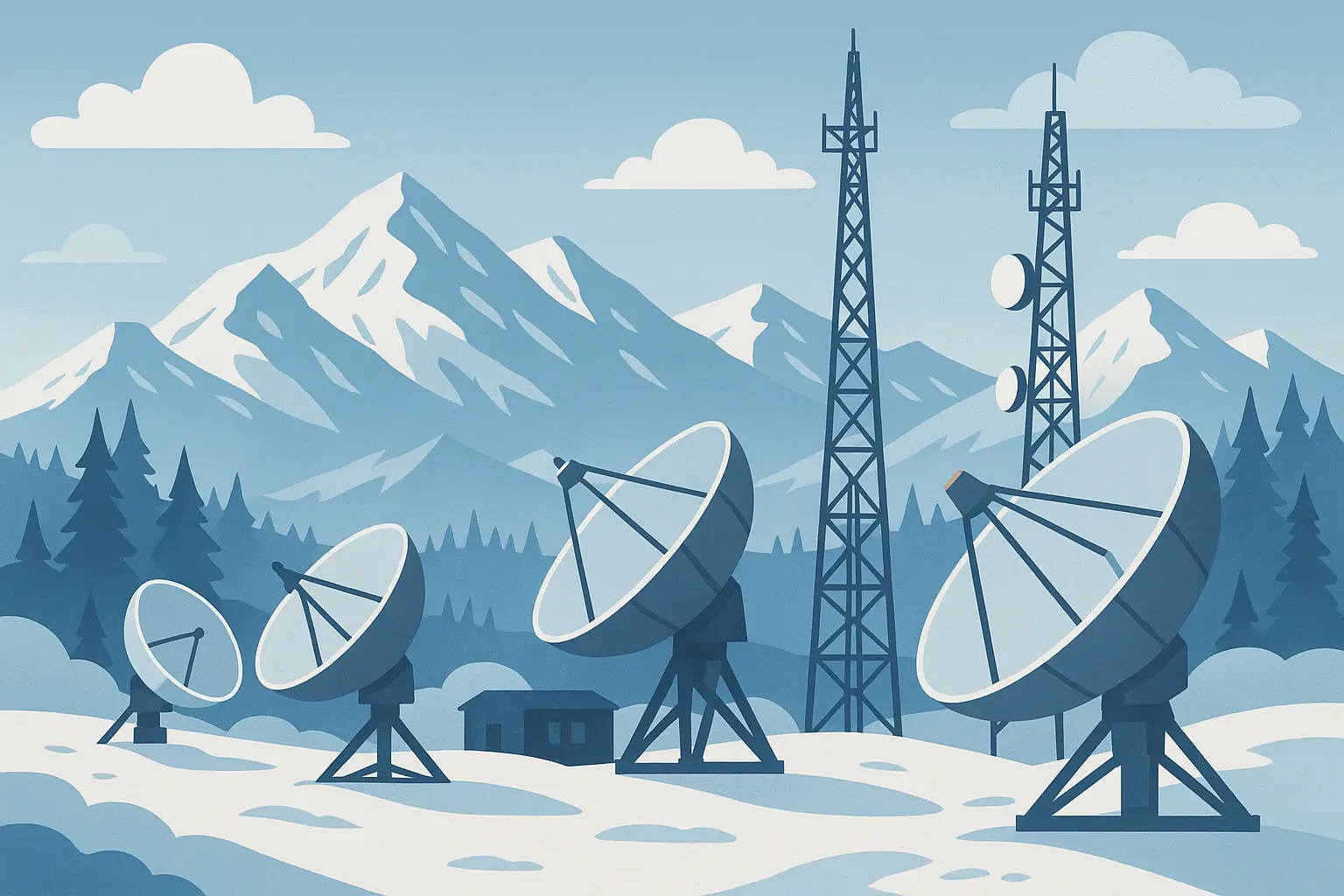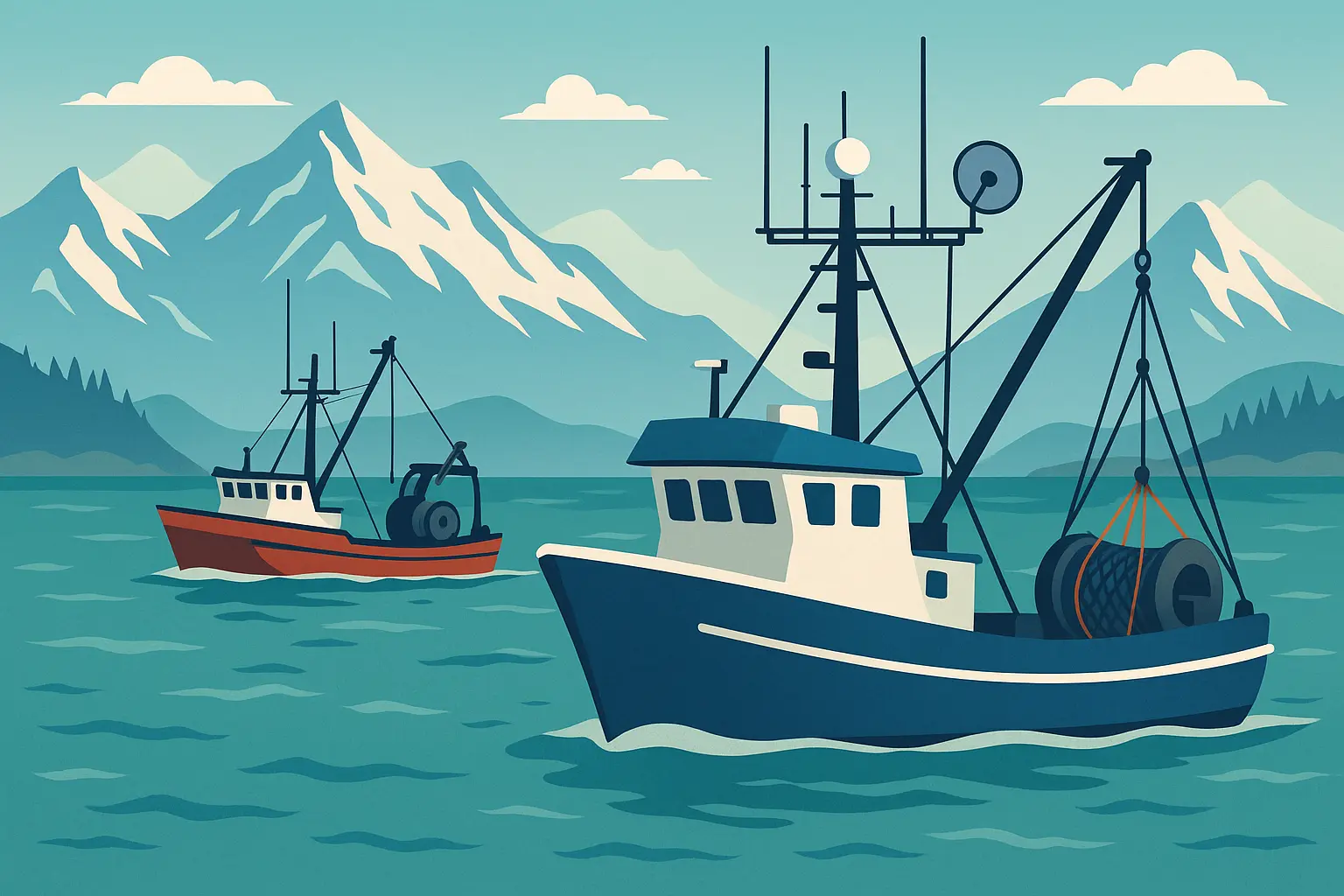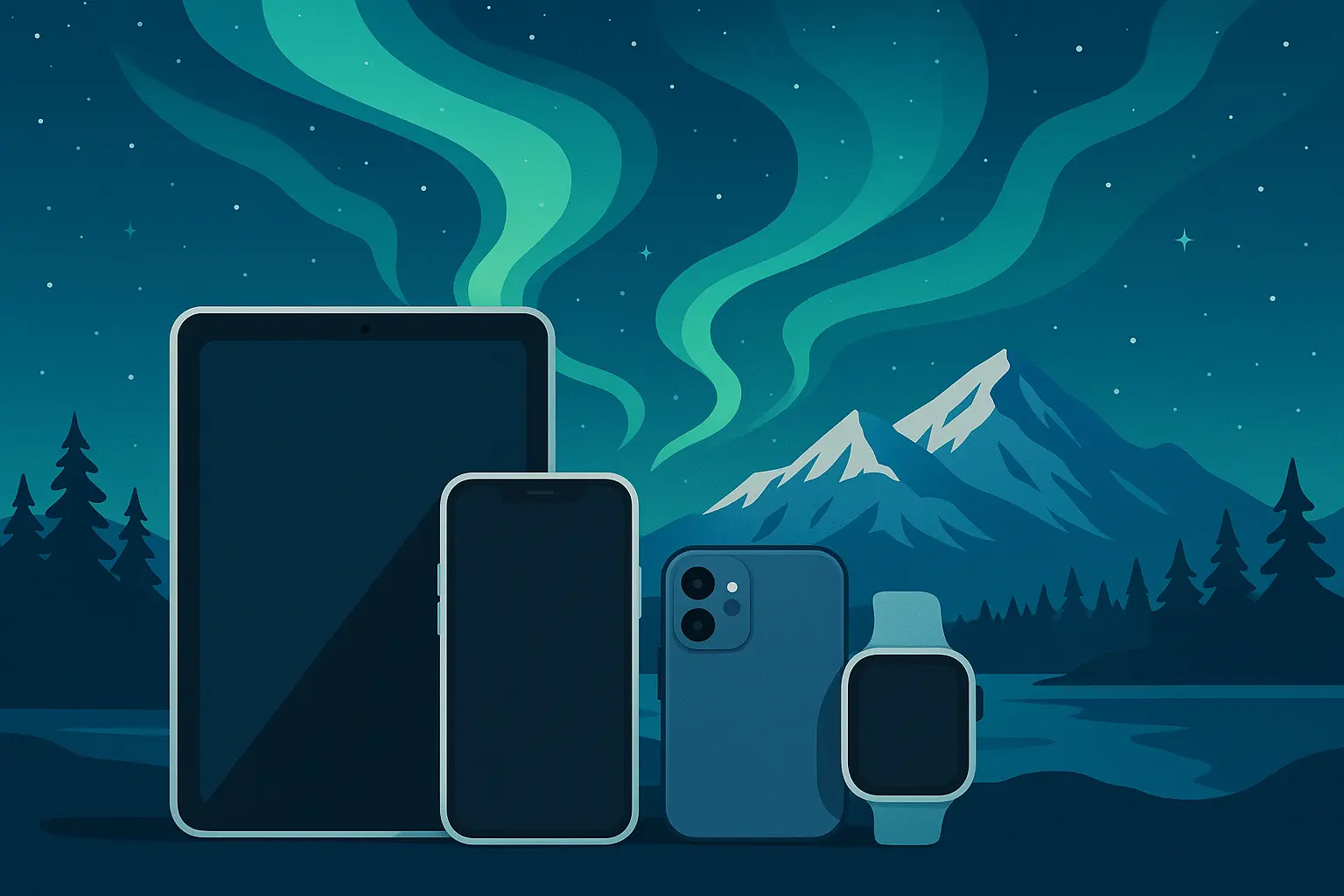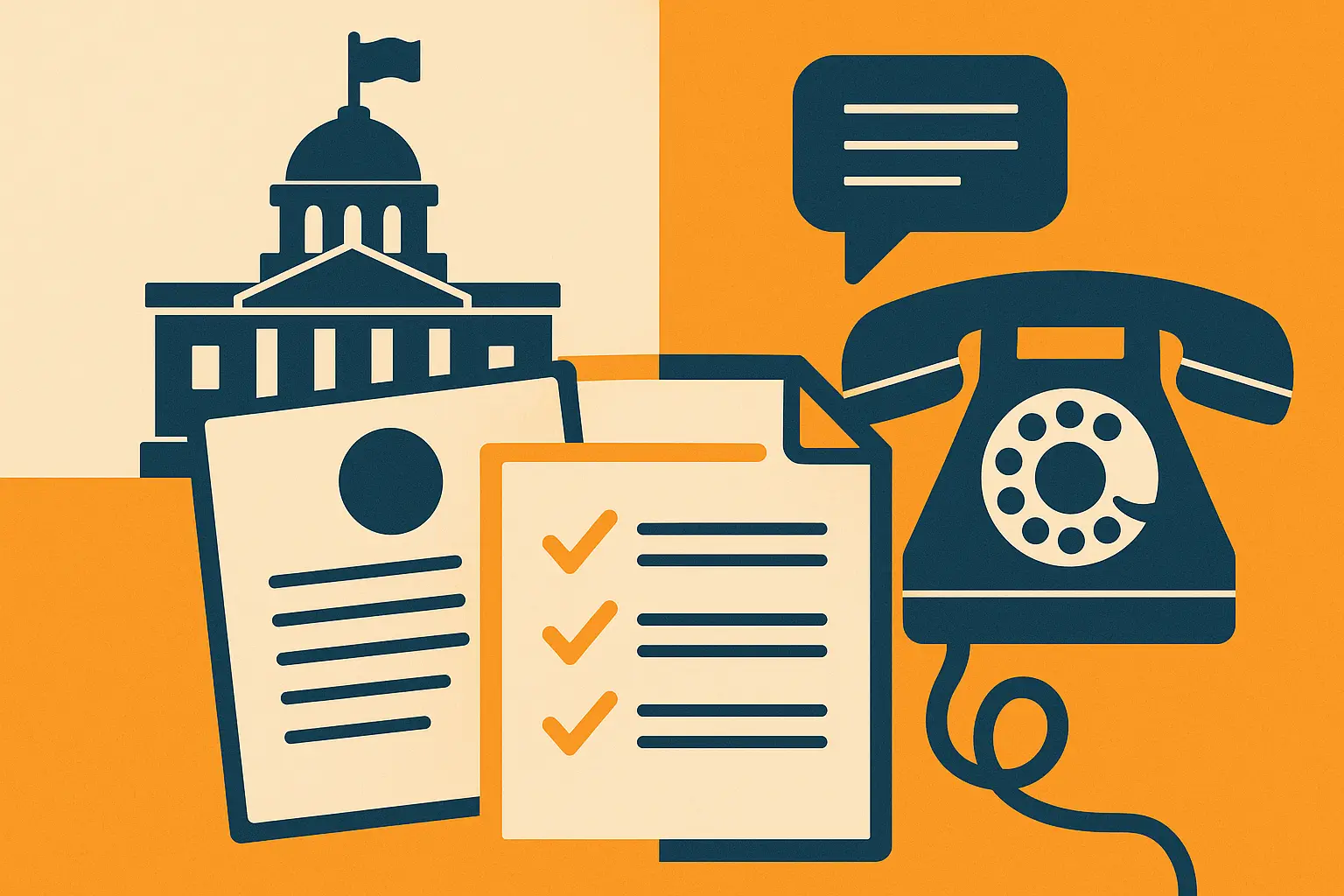When I tell people I live in Alaska, they’re usually impressed by the wilderness photos. What they don’t realize? My phone number comes with challenges that would make city dwellers lose their minds.
Alaska’s 734,000 residents all share the same area code – 907 – scattered across an area bigger than Texas and California combined. That’s not just a fun fact; it’s a daily reality that creates some of the weirdest telecommunications situations you’ll find anywhere in America.
Table of Contents
Table of Contents
-
Alaska’s Impossible Geography
-
Time Zone Chaos You Need to Know About
-
Why Your Calls Drop (And How We Deal With It)
-
Business Reality Check for the Last Frontier
-
Modern Tech Meets Wilderness Challenges
-
Rules and Regulations Nobody Talks About
-
How Auto Forward SMS Saves the Day
TL;DR
-
Alaska’s area code covers 663,300 square miles – that’s bigger than Texas and California combined
-
We deal with two different time zones within the same area code (yes, it’s confusing)
-
Satellite communication keeps remote villages connected, but weather can knock out service
-
Oil, fishing, and tourism industries create unique communication patterns throughout the year
-
Mobile service works surprisingly well in major cities, but forget about it in the wilderness
-
VoIP services have become a game-changer for Alaska businesses
-
The 907 isn’t running out of numbers anytime soon
Alaska’s Impossible Geography
Picture this: one area code covering 663,300 square miles. While other states split their phone numbers based on population density, Alaska’s sparse population still fits comfortably within a single designation. But “comfortable” is relative when your neighbor with the same area code lives 1,000 miles away and might as well be on another planet.
One Area Code, Endless Territory
Living here means your phone number connects you to a network spanning impossible distances. I can call someone with the same three digits who lives farther away than most people travel for vacation. The 907 encompasses everything from urban centers to wilderness areas where roads don’t exist and the only way in is by plane.
Here’s something that blows people’s minds: there’s actually one exception to Alaska’s unified identity. Hyder is the only community in Alaska that doesn’t use our area code – it gets electrical and telephone service from Canada and uses British Columbia’s 250, according to Alaska Business Magazine. Geography sometimes overrides political boundaries in telecommunications.
Where Everyone Actually Lives
Nearly 40% of all Alaskans live in the Anchorage area, making it the epicenter of most phone activity. When people think of Alaska phone numbers, they’re usually thinking of Anchorage. This concentration means most calls originate from or end up in this single metropolitan area, despite our area code covering such vast territory.
Fairbanks serves as the second-largest city and the hub for interior Alaska. Then there’s everyone else – scattered across hundreds of Native Alaskan villages where roads don’t exist, oil installations on the North Slope, and fishing communities throughout the Aleutian Islands. All sharing the same three digits.
Remote Villages That Defy Logic
The 907 reaches places that shouldn’t have phone service but somehow do. I’m talking about villages accessible only by air travel or seasonal boat access, yet they maintain the same area code as downtown Anchorage. These communities rely entirely on satellite connections, creating a telecommunications network that spans from the Arctic Ocean to the Pacific.
|
Population Distribution in Alaska |
|
|---|---|
|
Total Population |
734,264 |
|
Male Population |
386,162 (52.6%) |
|
Female Population |
348,102 (47.4%) |
|
Median Age |
36.5 years |
|
Average Family Size |
3.7 people |
|
Average Household Size |
3.1 people |
How This All Started
Alaska got the 907 designation in 1957, two years before statehood. The timing wasn’t coincidental – the territory was preparing for statehood and needed robust telecommunications infrastructure to support its new status. The implementation required overcoming challenges that no other area code had faced. Satellite communication became essential for connecting remote communities, while submarine cables linked Alaska to the continental United States and international destinations.
Understanding Alaska’s unique phone system becomes crucial when learning how to enter a phone number in international format, especially given the complexities of reaching remote locations from overseas.
Time Zone Chaos You Need to Know About
Here’s where things get really weird. Most of Alaska operates on Alaska Standard Time, which puts us 4 hours behind Eastern Time and 1 hour behind Pacific Time. But the westernmost Aleutian Islands operate on Hawaii-Aleutian Time, making them an additional hour behind the rest of Alaska.
This means a single area code spans two time zones. Try explaining that to someone scheduling a conference call.
Two Time Zones, One Phone Number
I once had a conference call where half the participants thought they were an hour late because they forgot about our time zone situation. Consider a business call between Anchorage and Adak in the Aleutians. When it’s 3 PM in Anchorage, it’s only 2 PM in Adak – both using the same area code. This creates scheduling nightmares for businesses operating across Alaska’s full geographic range.
When you’re calling us from the lower 48, timing becomes crucial. Alaska’s business hours don’t align neatly with continental US schedules, and the time difference affects everything from customer service availability to real-time collaboration. Companies have learned to build buffer time into their communication strategies, knowing that Alaska operates on its own rhythm.
Seasonal Communication Patterns
Speaking of weird timing, Alaska’s extreme seasonal variations create communication patterns that outsiders rarely consider. During winter months with limited daylight, business communications shift earlier in the day. Summer’s extended daylight hours can extend business calls well into what would be evening hours elsewhere.
Try explaining to someone in Miami that your “local” call just traveled 1,000 miles, bounced off a satellite, and crossed a time zone. They think you’re making it up.
Why Your Calls Drop (And How We Deal With It)
Alaska’s phone systems face challenges that would break infrastructure in other states. Let me walk you through the technical realities of maintaining phone service across permafrost, extreme weather, and areas accessible only by aircraft.
Satellite Dependency Reality
Many phone numbers in rural Alaska depend entirely on satellite communication systems. These aren’t backup systems – they’re the primary and only connection method for entire communities. Ground station networks throughout Alaska serve as critical relay points, ensuring calls can reach their destinations regardless of location.
When these systems fail due to weather or equipment issues, entire regions can lose connectivity. Last winter, my neighbor in Fairbanks couldn’t reach her daughter in Anchorage for three days because an ice storm knocked out the satellite relay.
Weather vs. Technology
Alaska’s extreme weather conditions create ongoing challenges that you just don’t see elsewhere. Permafrost affects underground cable installations, while ice storms can knock out above-ground systems for days. Even our backup systems can be overwhelmed during severe weather events.
Living with an Alaska number means accepting that sometimes, the weather wins. During the 2018 Anchorage earthquake, many of us experienced service disruptions as cell towers lost power and fiber optic cables were damaged. Emergency services had to rely on satellite backup systems to maintain communication with remote communities.
When Alaska’s harsh weather disrupts communications, businesses need reliable backup solutions such as forwarding text messages to email addresses to ensure critical messages aren’t lost during outages.
The Fiber Optic Revolution
Recent fiber optic installations have dramatically improved service quality in major population centers. These high-capacity connections provide faster, more reliable service and better voice quality for traditional phone calls. The expansion continues gradually, but Alaska’s geography means fiber will never reach every location. Our phone system continues adapting to these infrastructure improvements while maintaining service to remote areas.
Business Reality Check for the Last Frontier
Alaska’s economy creates unique patterns in how phone numbers get used across different industries. Our workforce shows unique characteristics with 362,016 people in the labor force representing 63.1% of the population, though the state faces a challenging 15.3% unemployment rate that affects business communication needs across industries.
Oil and Gas Communications
Oil companies use Alaska numbers for coordinating activities across remote drilling sites, pipeline operations, and support facilities throughout the state. These communications require specialized equipment capable of operating in extreme conditions while maintaining connection to our network.
The industry’s 24/7 operations create consistent demand for reliable connectivity, often in locations where standard telecommunications infrastructure doesn’t exist. Alaska’s area code serves these critical industrial operations across the state’s most remote regions.
Commercial Fishing Coordination
Alaska’s commercial fishing industry relies on our phone numbers for fleet coordination, processing facility communications, and market connections. The seasonal nature creates peak usage periods that stress the infrastructure during summer months.
Fishing vessels operating in remote waters depend on satellite-connected numbers for safety communications and operational coordination. The 907 supports these vital maritime operations throughout Alaska’s extensive coastline.
Tourism’s Communication Demands
Tourism businesses use Alaska numbers to connect with visitors worldwide, requiring robust international calling capabilities and customer service systems that handle inquiries across multiple time zones. The seasonal nature of Alaska tourism creates dramatic swings in usage patterns, with summer months seeing exponentially higher call volumes.
Our area code serves as the gateway for millions of tourists planning Alaska adventures, making reliable service essential for the state’s tourism economy.
|
Alaska Economic Indicators |
|
|---|---|
|
Median Household Income |
$64,271 |
|
Median Family Income |
$77,010 |
|
Per Capita Income |
$33,313 |
|
Labor Force Participation |
63.1% |
|
Unemployment Rate |
15.3% |
|
Income Gender Gap |
29.9% |
The availability and reliability of phone services directly impacts Alaska’s economic development potential. Businesses considering Alaska operations evaluate telecommunications infrastructure as a critical factor in location decisions. This makes our system’s reliability essential for the state’s economic competitiveness and growth prospects.
Alaska businesses managing communications across multiple locations often benefit from forwarding text messages to Slack channels to centralize team coordination despite the challenges of our vast geography.
Modern Tech Meets Wilderness Challenges
Alaska’s phone numbers have evolved with modern technology, but unique challenges remain. Let me show you how smartphones, VoIP services, and cloud-based systems work (or don’t work) in America’s last frontier.
Mobile Revolution in the Arctic
Despite challenging terrain, mobile penetration has reached levels comparable to the lower 48 states, with most Alaska numbers now associated with mobile devices. But here’s what’s different: battery life becomes critical for mobile users in remote areas where charging opportunities are limited. Extended satellite searching and harsh weather conditions drain batteries faster than anywhere else.
VoIP Services Change Everything
Voice over Internet Protocol services have become increasingly popular for Alaska users, particularly in areas with reliable internet but poor cellular coverage. These services allow people to maintain their Alaska identity while accessing enhanced features and lower costs.
Cloud-based phone systems enable Alaska businesses to maintain their numbers while providing advanced features such as call routing, voicemail-to-email, and CRM integration. A tourism operator in Denali uses VoIP to maintain their Alaska number while routing calls to seasonal staff across different locations. During peak season, calls can be answered by guides in the field using satellite internet connections, maintaining seamless customer service despite remote operations.
Network Roaming Complexities
Alaska users traveling between here and the continental US face unique roaming challenges, as some carriers treat Alaska as an extended roaming area despite us having a standard US area code. This creates unexpected charges and service limitations that we have to navigate when traveling.
Sometimes our area code designation confuses billing systems that weren’t designed for Alaska’s unique geographic situation.
Survival Tips for Alaska Mobile Users
-
Carry portable battery packs for extended wilderness trips
-
Download offline maps before leaving cellular coverage areas
-
Configure emergency contacts with satellite messenger backup
-
Verify roaming policies when traveling to lower 48 states
-
Test VoIP alternatives for areas with poor cellular but good internet
-
Set up call forwarding to multiple devices for redundancy
Alaska users managing multiple devices often find success with Android text message forwarding solutions to ensure messages reach them regardless of which device has the best signal in remote locations.
Rules and Regulations Nobody Talks About
Alaska’s area code operates under federal oversight with special considerations for our unique characteristics. Here’s the regulatory framework and future planning that keeps Alaska connected.
A significant regulatory change affected all Alaska users when Alaskans had to dial an additional three numbers for local calls beginning in October, as the Anchorage Daily News reported, as the FCC mandated 10-digit dialing to accommodate the 988 suicide prevention hotline.
Federal Oversight Reality
Our area code falls under Federal Communications Commission jurisdiction, with specific considerations for Alaska’s geographic and demographic characteristics. The FCC works with numbering plan administrators to ensure adequate number availability while considering Alaska’s special needs.
Alaska requires special regulatory attention due to our unique telecommunications challenges and infrastructure requirements.
Making Sure We Don’t Run Out of Phone Numbers
Despite Alaska’s small population, number conservation remains important due to mobile device proliferation, IoT applications, and business communication systems. Current projections suggest our area code will remain sufficient for Alaska’s needs without requiring splits or overlays.
This stability provides certainty for Alaska businesses and residents who’ve built their identity around the 907 designation. The gender distribution in Alaska shows 110.93 males per 100 females, creating unique demographic patterns that influence telecommunications usage and business communication strategies.
Emergency Services Integration
Alaska’s area code integrates with our emergency services network, providing critical communication links for search and rescue operations across the state’s vast wilderness areas. Special provisions ensure that emergency calls can be routed to appropriate response centers regardless of the caller’s remote location.
Our area code serves as a lifeline for emergency communications throughout Alaska’s challenging terrain.
How Auto Forward SMS Saves the Day
When you’re dealing with Alaska’s spotty service, you need backup plans. I’ve started using Auto Forward SMS to make sure important messages reach me even when my phone can’t get a signal. It’s one of those tools that makes living up here actually manageable.
Given Alaska’s vast geography, extreme weather, and satellite communication dependency, we often face connectivity issues that result in missed critical messages. Remote workers in Alaska’s oil fields, fishing industry, or tourism locations can use Auto Forward SMS to ensure business-critical messages sent to Alaska numbers are captured and forwarded to multiple stakeholders via email. This maintains operational continuity despite our challenging communication environment.
Emergency communication backup becomes crucial when Alaska’s harsh weather disrupts cellular towers and satellite communications. Auto Forward SMS creates redundant communication paths accessible through different internet connections, ensuring critical messages reach recipients during infrastructure outages.
For Alaska businesses just starting with message forwarding solutions, getting started with AutoForward SMS for the first time provides essential setup guidance tailored to the unique challenges of remote locations and unreliable connectivity.
Ready to ensure your messages never get lost in Alaska’s wilderness? Try Auto Forward SMS today and create reliable backup communication channels that work even when Alaska’s infrastructure doesn’t.
Final Thoughts
Look, having a 907 number isn’t just about living in Alaska—it’s about being part of a communication network that shouldn’t work but somehow does. Every time I make a call, I’m reminded that we’ve figured out how to stay connected across one of the most impossible places on Earth. And honestly? That’s pretty amazing.
Alaska’s area code represents more than just a phone number prefix – it’s a testament to human ingenuity in connecting one of the world’s most challenging geographic regions. From satellite-dependent villages to oil platforms in the Arctic, our network keeps Alaska connected to the world despite obstacles that would defeat lesser systems.
Understanding these unique characteristics helps anyone dealing with Alaska numbers appreciate the complexity behind what seems straightforward. Whether you’re doing business in Alaska or just trying to stay in touch with someone here, knowing these realities makes all the difference in successful communication.
Our area code will continue evolving with technology, but Alaska’s geographic challenges ensure it will always require special consideration and innovative solutions to maintain reliable service across America’s last frontier. The 907 designation has become synonymous with Alaska’s resilience and determination to stay connected despite formidable natural barriers.
